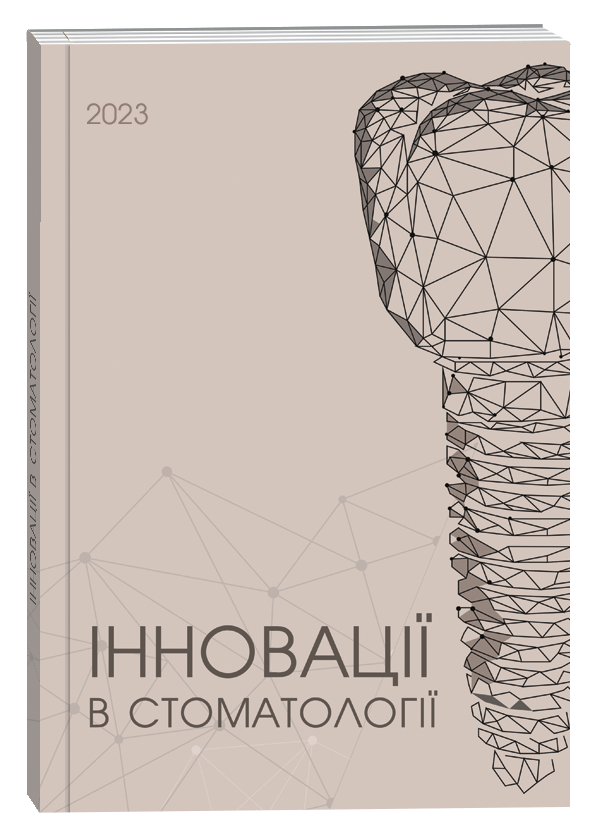STUDY OF THE EFFECT OF THERAPEUTIC AND PREVENTIVE MEASURES ON CATALASE ACTIVITY IN THE ORAL FLUID OF PATIENTS WITH HEAD AND NECK TUMOURS
DOI:
https://doi.org/10.35220/2523-420X/2025.2.10Keywords:
head-and-neck tumors; catalase; saliva; antioxidant defense; therapeutic-prophylactic complexAbstract
In malignant head-and-neck tumors (HNT), oxidativereductive imbalance is accompanied by a decline in the activity of antioxidant-defense enzymes–primarily catalase–which aggravates biomolecular damage and hinders postoperative rehabilitation. The purpose of the study was to evaluate the influence of a proposed therapeutic-prophylactic complex (TPC) on salivary catalase activity in HNT patients during a 12-month follow-up. Materials and methods. Thirty-five individuals aged 25–55 years were examined: 25 HNT patients (comparison group, n=10; main group, n=15) after surgical tumor removal followed by standard chemotherapy, and 10 apparently healthy volunteers (reference group). The main group additionally received the TPC, which was readministered 6 months after treatment initiation. Nonstimulated whole saliva was collected, and catalase activity was measured biochemically at baseline and at 1, 3, 6 and 12 months. Statistical processing was performed with STATISTICA 6.1 using Student’s t-test. Research results. At baseline, catalase activity in both patient groups was 2.7–3.3-fold lower than reference values. Standard therapy in the comparison group induced only transient increases (+22.2% at month 1; +44.4% at month 3), with a return to baseline by month 12. In contrast, the TPC raised catalase activity by 36.3% after 1 month and by 90% after 3 months, with the gain persisting through month 12. At every time point, catalase activity in the main group was significantly higher than in the comparison group. Conclusions. The proposed TPC significantly reinforces antioxidant defense by restoring and sustaining salivary catalase activity in HNT patients for at least 12 months of rehabilitation, demonstrating marked antioxidant efficacy.
References
Perillo B., Di Donato M., Pezone A., Di Zazzo E., Giovannelli P., Galasso G., et al. ROS in cancer therapy: the bright side of the moon. Exp Mol Med. 2020. №52(2). Р. 192–203. DOI:10.1038/s12276-020-0384-2.
Kumari S., Badana A.K., G MM, G.S., Malla R. Reactive oxygen species: a key constituent in cancer survival. Biomark Insights. 2018. №13. Р. 1177271918755391. DOI:10.1177/1177271918755391.
Wang H., Agarwal P., Zhao G., Ji G., Jewell C.M., Fisher J.P., et al. Overcoming ovarian cancer drug resistance with a cold responsive nanomaterial. ACS Cent Sci. 2018. №4(5). Р. 567–581.
Ighodaro O.M., Akinloye O.A. First line defence antioxidants-superoxide dismutase (SOD), catalase (CAT) and glutathione peroxidase (GPX): their fundamental role in the entire antioxidant defence grid. Alexandria J Med. 2018. №54(4). Р. 287–293. DOI: 10.1016/j.ajme.2017.09.001.
He C., Lu J., Lin W. Hybrid nanoparticles for combination therapy of cancer. J Control Release. 2015. №219. Р. 224–236. DOI: 10.1016/j.jconrel.2015.09.029.
George S., Abrahamse H. Redox potential of antioxidants in cancer progression and prevention. Antioxidants. 2020. №9(11). Р. 1156. DOI: 10.3390/antiox9111156.
Казимирко В.К. Перекисне окиснення ліпідів: протиріччя проблеми. Український ревматологічний журнал. 2014. №(3). С. 13-17.
Luo M., Zhou L., Huang Z., Li B., Nice E.C., Xu J., Huang C. Antioxidant therapy in cancer: rationale and progress. Antioxidants. 2022. №11(6). Р. 1128. DOI: 10.3390/antiox11061128.
Методи дослідження стану кишечнику та кісток у лабораторних щурів : довідник / О. А. Макаренко, Л. М. Хромагіна, І. В. Ходаков та ін. Одеса : Одеський національний університет ім. І. І. Мечникова, 2022. 81 с.
Рогач І.М., Керецман А.О., Сіткар А.Д. Правильно вибраний метод статистичного аналізу – шлях до якісної інтерпретації даних медичних досліджень. Науковий вісник Ужгородського університету. 2017. Вип. 2. С. 124–28.








